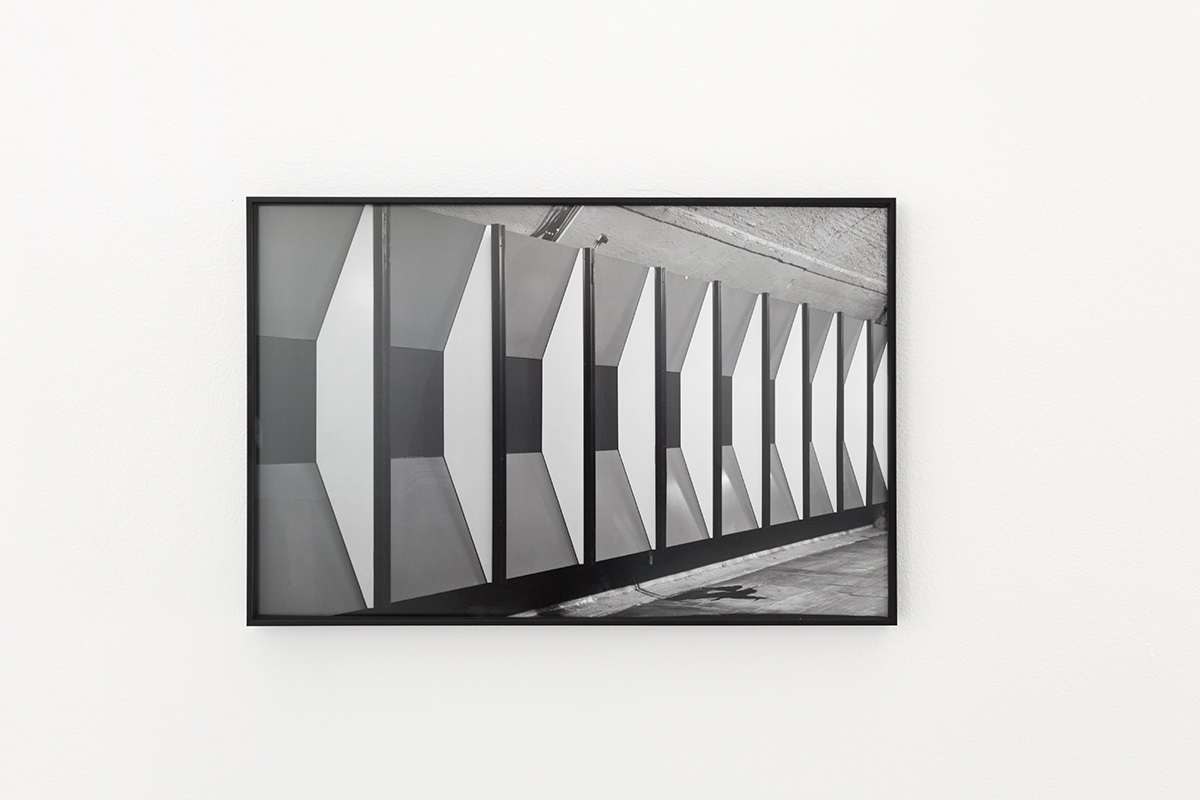

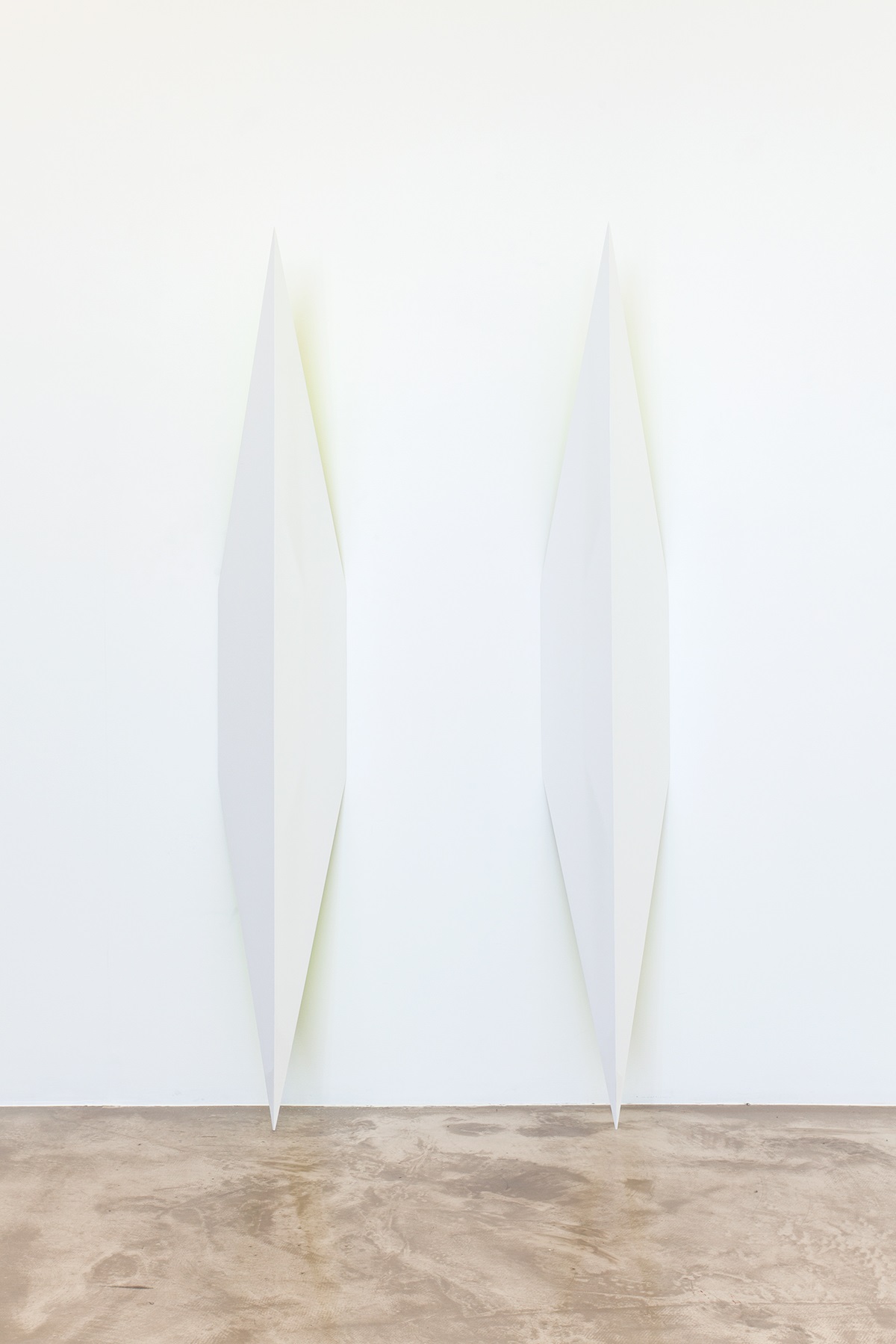
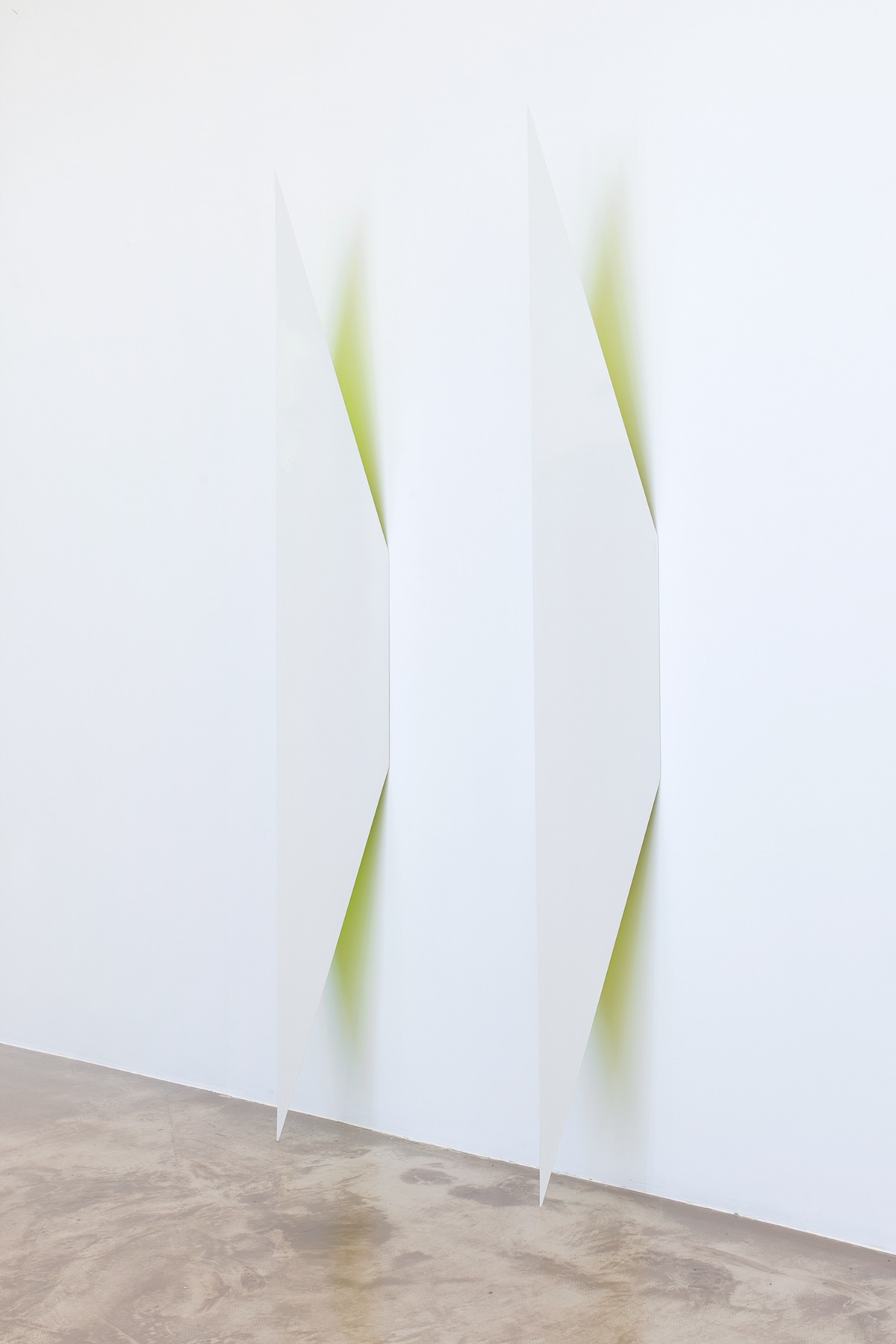
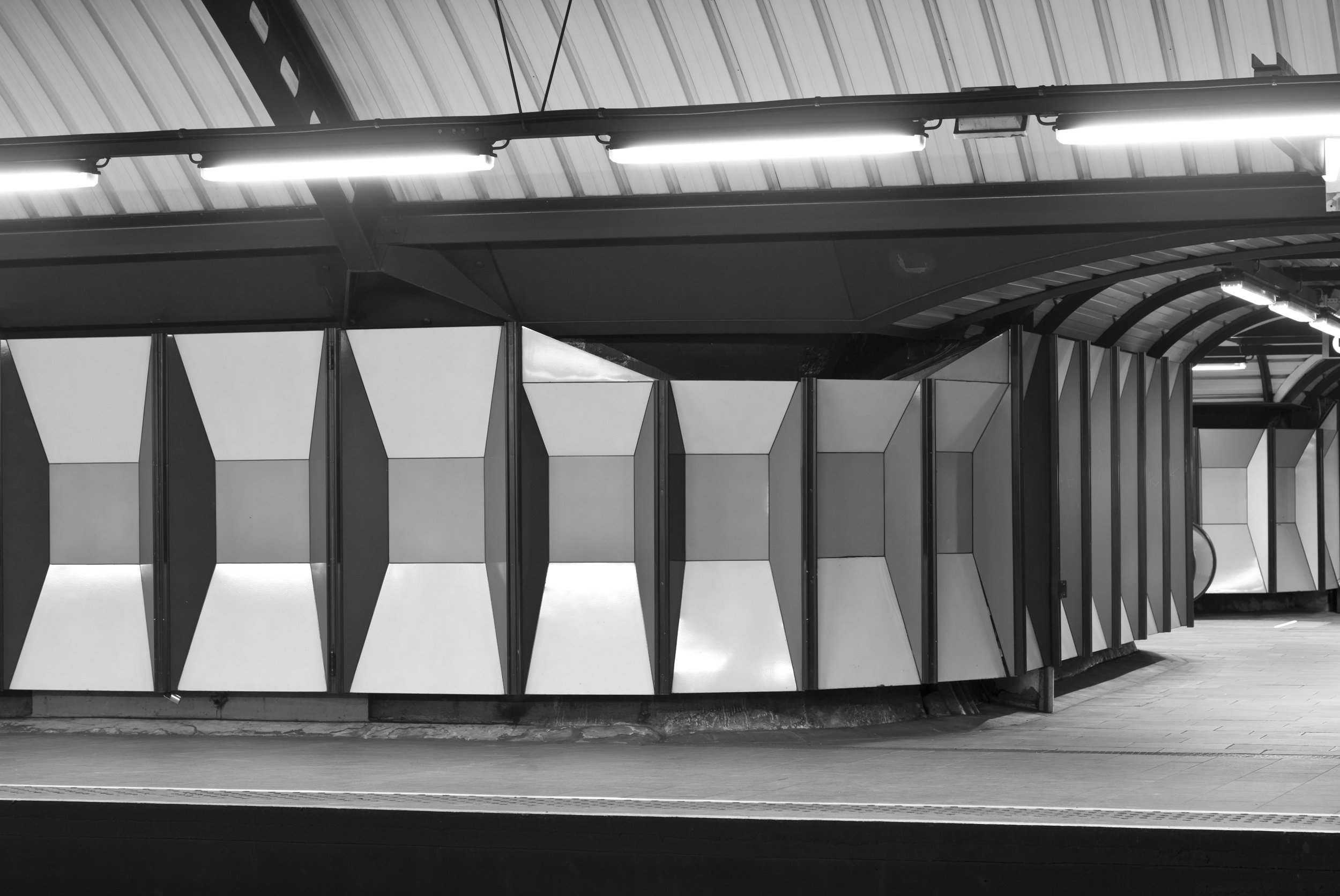
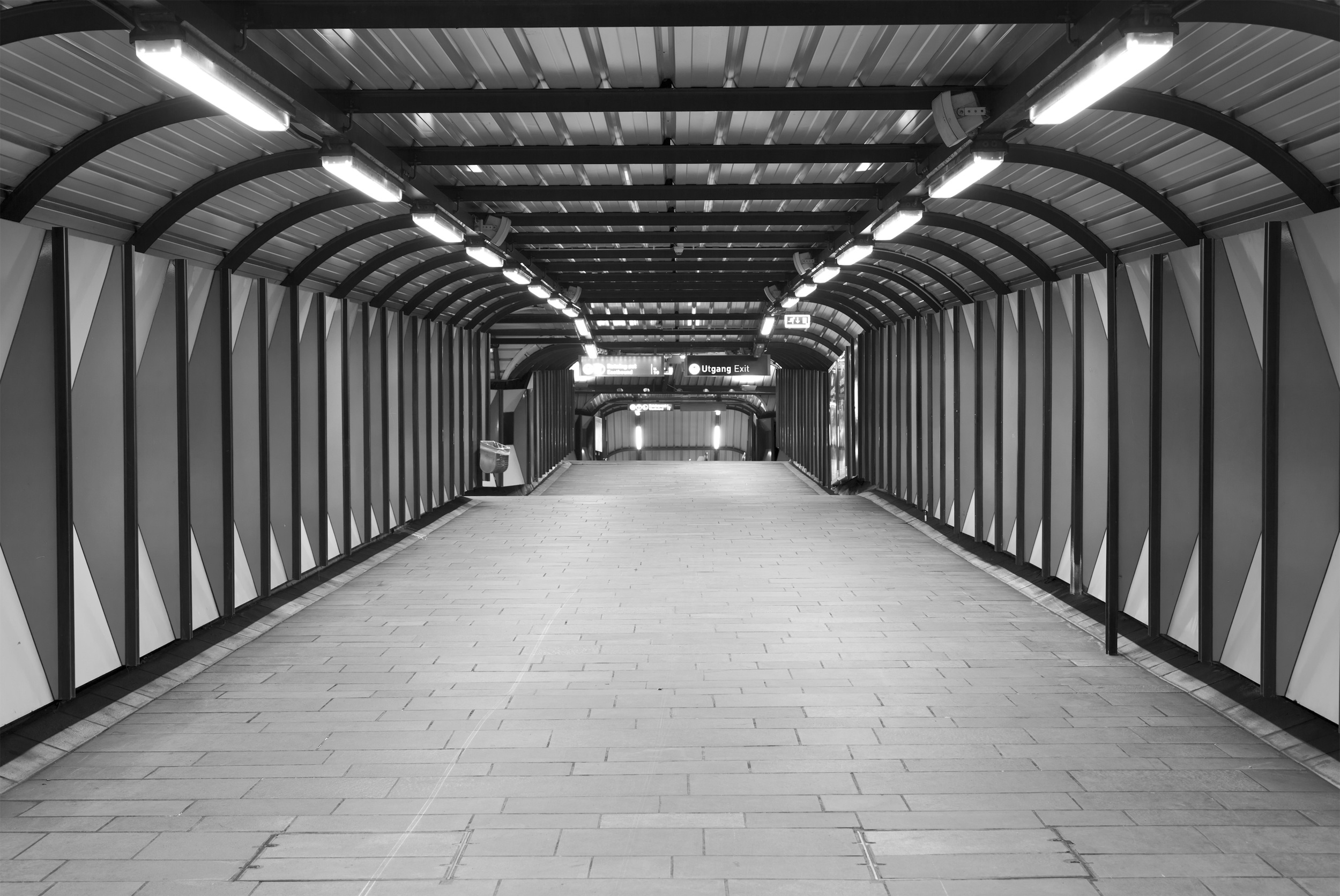
Anders Sletvold Moe
Born 1978 in Steinkjer. Lives and works in Oslo.
Characteristic for Anders Sletvold Moe’s artistic practice is that he works with painterly issues and challenges related to art’s spatial surroundings. In doing this he builds on the legacy of minimalist artists who tested the relation between a work of art and its placement. Sletvold Moe does this quite concretely by cutting directly into a room’s walls or by building additional constructions onto walls, and by using colour, light and reflection to create painterly effects. Such interventions break down the traditional boundaries of autonomous artistic media such as painting. In his artistic practice, Sletvold Moe demonstrates a genuine interest in both modernist art history and in the further development of an abstract visual language that extends beyond painting’s traditional boundaries. He thus situates himself in his own era at the same time as he relates actively and in a reflective way to the history of abstract art.
When the exhibition NN-A NN-A NN-A New Norwegian Abstraction was shown at Astrup Fearnley Museum, Sletvold Moe presented his ongoing series Black Letters. These works consist of A4-size pieces of black Plexiglas painted with geometrical, abstract compositions in shades of black. The compositions are actually borrowed from works by other artists. It is these artists’ subjective and material treatment of paint that has been the focus of Sletvold Moe’s studies. He emphasises this through the way he applies black paint to the Plexiglas in an alteration between flat and textural brushwork. The Black Letters series inscribes itself in a long and eventful history of black painting, from Aleksander Rodchenko’s Black on Black paintings in 1918 to Ad Reinhardt’s Black Paintings and Frank Stella’s Black Paintings in the 1960s, to Pierre Soulange’s Outrenoirs starting in the late 1970s. Viewing Black Letters in the context of these earlier works is like a meta-lesson in art history, more specifically, in the history of abstract art. At the same time, the series retains a strong personal connection to its creator, for Sletvold Moe’s selection is marked by a personal interest in and admiration for the quoted works and the artists who made them.
In the current presentation of NN-A NN-A NN-A, Stavanger Art Museum, in consultation with Sletvold Moe, has chosen that rather than exhibiting Black Letters, it will exhibit other works which also borrow from existing works. In creating the sight-specific wall painting Unfolded Shape Drifter, Sletvold Moe uses an extract of a mural he himself made for the sheriff’s office of Volda and Ørsta, and in the black-and-white photographic series Grayscale (Documenting Architecture) and Folded Reflections, which consists of two sculptures, he analyses and reinterprets the architecture of the Stortinget metro station in Oslo. Situated next to Norway’s parliament, this station was designed by the architect Håkon Mjelva in the 1970s. Sletvold Moe, in making his own work, has focused on the geometrical elements along the station’s walls.
Inside the Stortinget metro station, Mjelva has designed passageway side-panels consisting of bright colours (blue, orange and red) organised in sharply defined three-dimensional fields. The forms turn the walls into a continuous sculptural experience, since they consist of panels set in three-dimensional patterns. The repeating elements follow the walls and create an interplay of forms and colours for commuters.
In Sletvold Moe’s photographs, the massive, colour-saturated station hall has been interpreted through the camera lens and given a more subdued look. In black and white, the abstract three-dimensional forms are presented as extracts; anyone already familiar with the metro station will recognise where the photos were taken on account of the characteristic geometrical shapes rather than the colours. As we look at the photographs, our focus is thus directed towards other qualities than those most immediately associated with the station.
The white sculptures in the work Folded Reflections have as their starting point one single module from the metro station. Aside from the reflection cast by their neon-yellow inside surface, they stand as neutral yet sharp forms against the museum’s white walls. Mjelva’s original architecturally shaped elements are elongated, such that the areas where the planes meet and form sharp corners are extended into vanishing points.
Sletvold Moe works extensively with the spatial environment where his works will be exhibited or incorporated. The decision to present Grayscale (Documenting Architecture), Folded Reflections and Unfolded Shape Drifter instead of Black Letters at Stavanger Art Museum was made on account of the marked interaction between the artworks and the museum’s architecture. The extract from the sheriff’s office mural has been transformed into an independent work that fills the short wall at the end of the entrance hall, thus constituting a natural focal point at the end of the sightline. The four photographs and the sculptures stand in immediate relation to the mural. When entering the hall, we first see the sculptures in profile. This enhances our experience of their form, given that they lean into the wall, balancing with one vanishing point against the floor, the other stretching towards the ceiling.
Text by: Therese Möllenhoff / Maiken Winum

